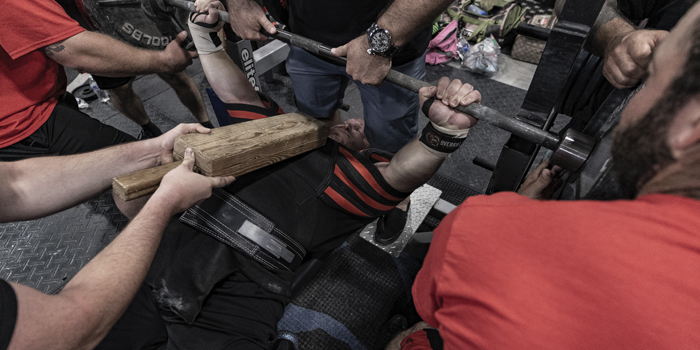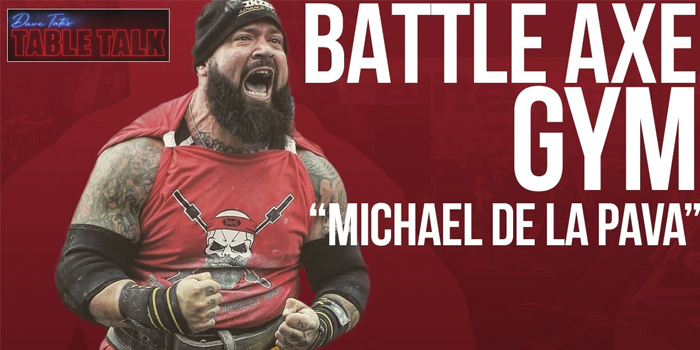
Well, maybe you are a genetic outlier, so this article won't apply to you, but if you're a part of the remaining 99% of lifters and athletes, listen up!
In the world of strength sports, we admire those who are better than us. This can be anyone, your favorite powerlifter, strongman, Olympic lifter, or the skinny dude or girl at the gym each Friday squatting three times bodyweight for reps. We see these people and often ask ourselves, how do they train?
An obvious thought is that if we do what they do, we will undoubtedly be as great as them! Sorry, but that's not how it works. In fact, most of us will never yield the same results training the same way our peers do, let alone top competitors.
Training must be specific to the individual. Picture this: one big group of training partners squatting, benching, and deadlifting three to five times a week following the same exact set and rep schemes their idols do with little to no accessories. As a result, one of them builds strength, and the rest of the group plateaus or gets injured.
Remember that skinny dude or girl I mentioned? They squat five sets of five reps, beltless, once a week with a hangover after working a 12-hour shift, but managed to add 50 pounds to their squat this year. Maybe they were born with more fast twitch muscle fibers than most, perhaps they have some freak neurological qualities, or maybe the Gods blessed them with the power of strength. I have no idea, but whatever the reason, remember this: YOU ARE NOT THEM.
Athletes who require strength for their sport should review the following information, as training plateaus are usually the result of one or more of these issues.
Special Strength Deficiencies and Technical Flaws
The special strengths I'm referring to are absolute strength, power, and explosiveness. So which element are you missing? Because you need them all.
Are you strong but slow? By increasing explosive power, you will generate force faster, resulting in bigger lifts. A brilliant man once said, "you can't lift a heavy weight slowly," and guess what? He was right.
I suggest researching the dynamic method of lifting. However, there are many ways of becoming more explosive. Simply including Box Jumps into your program will transfer over to your 1RM. Power = Force X Velocity; it's fundamental physics. If work is performed slower, the power will be less. But (insert outlier here) does not do speed work; again, you are not them. Being slow will, without a doubt, slow your training progress.
Are you new to a particular movement? Then increase your training frequency to allow for neurological adaptations and to work on technique. Remember, specificity is vital when mastering a new skill. However, once your technique has been dialed in, reduce training frequency to avoid injuries and accommodation; I'll get to this more in a bit.
Speaking of technique, grab some good training partners, a coach, or both. A simple flaw in technique could be the only reason you've plateaued.
Muscular Weaknesses and Imbalances
"The three big lifts are all you need." We've all heard this one before, and it's my opinion they are NOT all you need. There is much to be gained from compound lifts, but weaknesses must be targeted directly with accessory work and single-joint movements.
For example, do you have a weak lower back? If compound lifts are all you need, why do I see lifters who have done nothing but squatting and deadlifting with weak lower backs? Their solution is always the same, "I just need to train harder and squat and deadlift more; that's what (insert genetic outlier) does." Instead, they need to target their weakness directly if something isn't working.
RECENT: Better Ankles Equals Better Conventional Deadlifts
The weight needed to get anything out of a compound movement is significantly heavier than the weight we would use for a single-joint movement. For example, I know I can increase my bench press by strengthening my triceps, and although bench pressing will strengthen my triceps, I can use a much lighter weight doing a single joint movement like a dumbbell triceps extension. Both will result in a bigger Bench Press, the difference is the single joint movement will target the triceps directly without the support of other joints and muscles, and since the weight is lighter, it will not be as rough on the joint itself. Remember, too much training volume with compound lifts almost always results in injury.
Identify weaknesses that expose themselves during compound lifts, and target weaknesses and imbalances directly with accessory work to avoid plateaus and injury.
The Biological Law of Accommodation
The law of accommodation is the decrease in your body's response to a constant continued stimulus (Zatsiorsky, V). In other words, if we train the same way for too long, we will fail to increase performance and, in some cases, become worse.
You will become accommodated if you've been performing the same exercises, training volume, frequency, and intensity for too long. "But (insert genetic outlier) does it!" But, again, you are NOT them! Eventually, adding weight to the Barbell every week will not be a significant enough stimulus to trigger a training response.
The greater the intensity of an exercise, the quicker your body will become accommodated. For heavy days think of three variations of the compound exercises you are performing, like the Incline Bench Press, Close Grip Bench Press, and Bench Press with Chains. The exercises are specific enough to get better at benching but different enough to create a new stimulus for the body to adapt to.
It's important to remember that your body does not know you are lifting a weight; it thinks you are doing something vital to your survival. Hunting, gathering, running from a bear, etc. When something becomes routine, the training adaptation could be better.
Rotate heavy compound exercises every one to three weeks, and submaximal compound lifts every three to eight weeks. Accessory exercises should rotate based on individual weaknesses every three to eight weeks as needed. Once an exercise stops working, do something else.
References
- Zatsiorsky, Vladimir M. Science and Practice of Strength Training (1995)

Chuck Simons is an Army veteran. He lives in Pinellas Park, Florida. As a strength coach, he works out of the Tampa Bay area and holds a Westside Barbell Certified Special Strength Coach certification. Chuck is a competitive powerlifter in the APF and a part of Barbell Barbell.










5 Comments